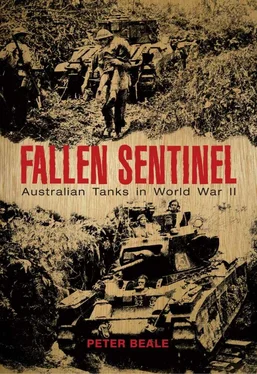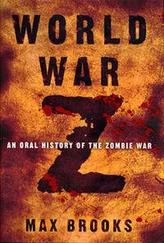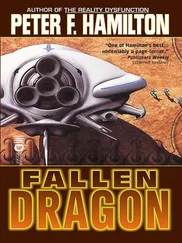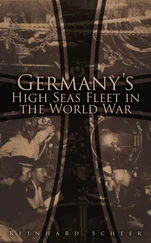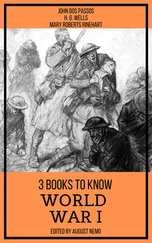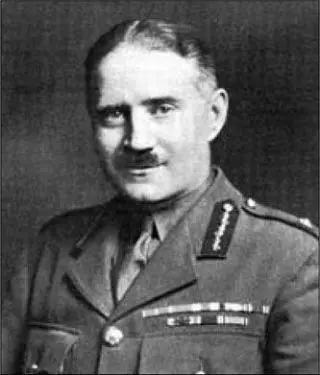
Major General Vyvyan Pope in 1940, shortly after he had been appointed Director of Armoured Fighting Vehicles at the British War Office. He was killed in an air crash in October 1941 a few days after his promotion to command the British XXX Corps in North Africa.
Pope was asked to present his views to a committee which was reviewing the lessons to be learnt from the French campaign. He appeared before this committee on 17 June 1940 and was asked his opinion on the smallest number of tanks that he would consider decentralising under the command of another formation. 33He replied: ‘an armoured division’. There was some discussion which gave Pope the impression that the committee was abandoning the task of studying the lessons that could be learned and was devoting itself to the task of the defence of England.
Some members of the committee were anxious to form small packets of brigade groups containing all arms and tanks and to scatter them around England. Pope made it very clear that he could not subscribe to that doctrine, and that the experience in France had shown that the dissipation of armoured forces had led to its defeat. In defence, armoured troops should be concentrated in reserve ready to strike when required. Pope was also extremely critical of the quality and quantity of tanks supplied to Britain’s armoured forces in France.
The next time that British tank troops saw significant action was in the Western Desert in December 1940. 34After some preliminary pushes against the Italian forces opposed to them, the formation trained by Hobart, now named the 7th Armoured Division, decided to push westwards along the coast of North Africa. Using the open desert and the mobility of tanks and brilliantly commanded by Lieutenant General Richard O’Connor, they succeeded superbly.
Although they were subsequently pushed back by Rommel and the German forces, the 7th Armoured Division had achieved a very significant victory and one which heartened the politicians and the people of Britain. One unfortunate result of this victory, however, was that it appeared to suggest that tanks could achieve victories on their own. This, combined with the pre-war teaching of Hobart, led many observers to believe that tanks could generally secure victory without the assistance of other arms. This misconception was to cause many of the calamities that occurred in the Western Desert over the next two years.
Army Training Instruction No. 3, ‘Handling of an Armoured Division’, published in 1941, appears to be the first wartime document on tank doctrine. It outlined a structure for the armoured division which comprised an armoured car regiment, two armoured brigades, and a support group. The support group contained one lorried infantry battalion, three field batteries of artillery, three batteries of anti-tank guns and light anti-aircraft batteries.
Two interesting points are included in the details of this instruction. First, the tactics for the engagement of enemy armoured formations include the possible use of anti-tank guns supporting the armoured forces. Second, it makes a very clear statement that ‘fire from stationary positions will always be more accurate than from a moving platform.’ This second statement is in complete contradiction to the policies of firing on the move which were so strongly advocated and taught by Hobart and other tank officers before the war.
In July 1943, the War Office produced another document called ‘The tactical handling of armoured divisions’. This expressed a rather different doctrine and organisational structure to those advanced in 1941. The composition of the armoured division now comprised an armoured regiment, an armoured brigade, an infantry brigade, supporting engineers and artillery. The artillery consisted of two field regiments, one of them equipped with self-propelled guns, and one regiment each of anti-tank guns and anti-aircraft guns. Thus the emphasis had moved from armour to infantry, creating a more balanced division.
By July 1943, British forces had achieved significant successes in North Africa. One of the main policy items was that ‘an armoured division is a formation consisting of all arms. Tanks by themselves cannot win battles and the unarmoured units of the armoured division are indispensable while the administrative services play roles no less vital and equally dangerous in maintaining supplies of all kinds.’
The roles of an armoured division were listed in the July 1943 document as: cooperation with the main army and the air forces in effecting the complete destruction of the enemy, usually by envelopment or by deep penetration through his defences after a gap has been made in his main position by other formations; pursuit; cooperation with other arms in defence, usually by counter-attack; and threatening the enemy and forcing him to alter or disclose his dispositions.
Clearly the lessons of Alamein and subsequent desert battles were those which were documented in this training pamphlet. Whether these methods would be suited to other theatres of combat such as Sicily, Italy, Normandy and north-west Europe and the Pacific theatre remained to be seen.
The last document to be considered in establishing tank doctrine was that produced by Field Marshal Montgomery in December 1944. 35This is written in Monty’s customary brisk style and summarised clearly the lessons that had been learnt throughout the war to that point. The predominant theme is one of flexibility:
All commanders must be well versed in the employment of armour. This means that Army and Corps commanders should be capable of making the best use of armoured formations at their disposal.
The armoured division is particularly suited for employment in the fast-moving and fluid battle. The aim of planning should be to create opportunities to use the armoured division in this role: if suitable opportunities can be created, then the action of the armoured division is likely to be decisive.
An armoured division can also carry out many of the tasks that are normally given to an infantry division: but it is a different kind of weapon and the job has therefore to be tackled in a different way.
The main characteristics of an armoured division are its armour, firepower, and mobility. Plans for the employment of the division which do not exploit these characteristics to the full will not be sound.
Armour is most effective when employed concentrated: a mass of armour, particularly in the enemy’s rear, has a moral effect.
Monty adds that the armoured division can be grouped in a variety of different ways. The grouping adopted in any particular case must depend on the problem; there is no normal grouping, and any rigidity in this respect is to be deprecated. This is wholly borne out by the comments of Major General Pip Roberts: 36
Throughout the war the tactics used within an armoured division and its organisation were continually changing. It was not until our third battle in Normandy that we got it right, and that was an organisation of complete flexibility. At the shortest notice the organisation could be altered from an armoured brigade and an infantry brigade to two mixed brigades, each of two armoured regiments and two infantry battalions and artillery as required. All units were entirely interchangeable. 37
Roberts, who commanded the 11th Armoured (Charging Bull) Division, was probably the best armoured divisional commander in the north-west campaign. There seems at last to have been agreement at all levels of military command on the way in which armoured forces should be used. But those people who were participants in armoured battles in the five years up till then were certainly at the mercy of commanders who occasionally handled them in a manner that was less than optimal.
Читать дальше
